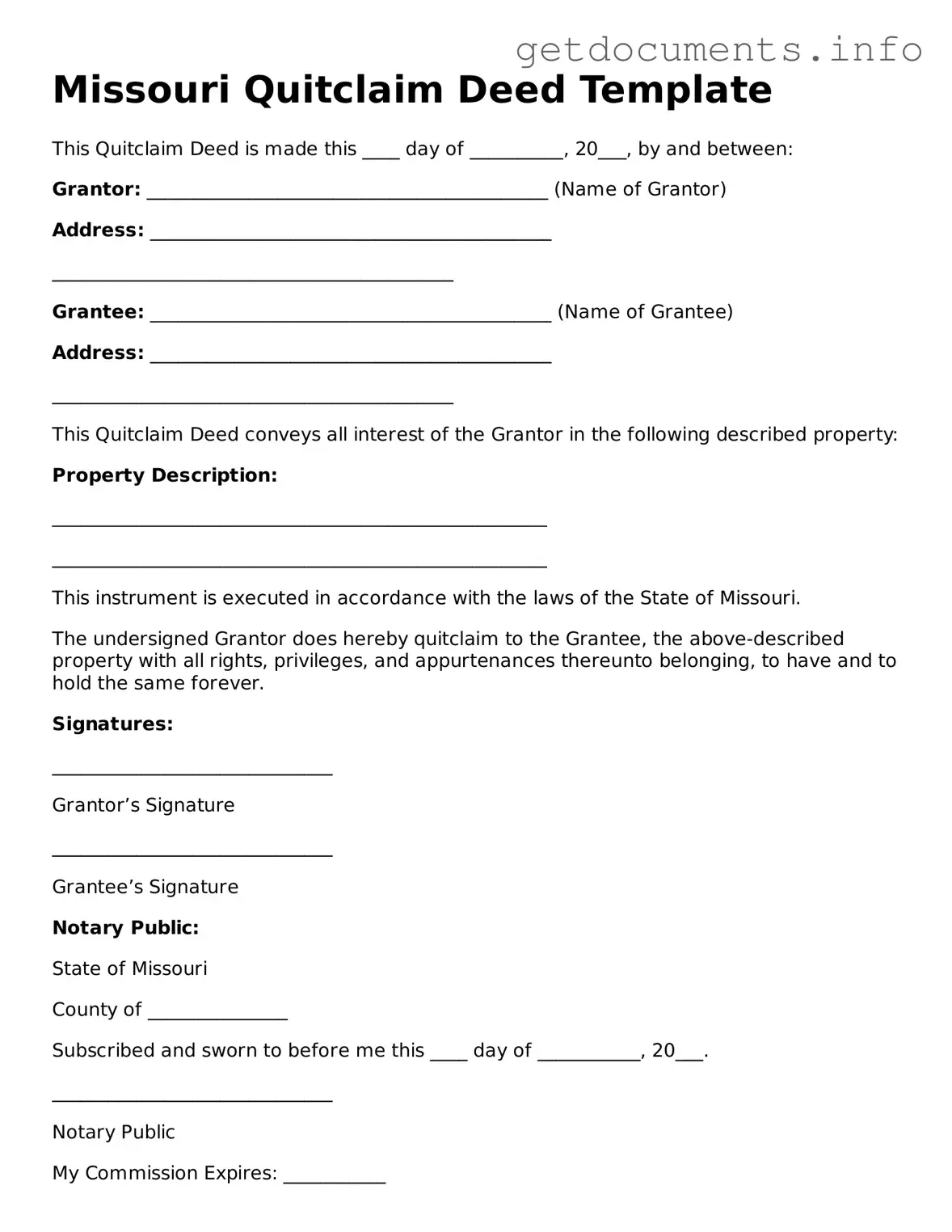When it comes to transferring property ownership in Missouri, the Quitclaim Deed form stands out as a straightforward and efficient option. This legal document allows an individual, known as the grantor, to convey their interest in a property to another party, called the grantee, without making any guarantees about the property’s title. Unlike other deed types, the Quitclaim Deed does not assure the grantee that the title is free of liens or other encumbrances. This means that the grantee receives whatever interest the grantor has, if any, which can be particularly useful in situations such as divorce settlements, property transfers between family members, or clearing up title issues. The form requires essential details, including the names of both parties, a description of the property, and the date of the transfer. While the Quitclaim Deed is often simpler and quicker to execute than other deeds, it is crucial for both parties to understand the implications of this type of transfer. Properly completing and filing the Quitclaim Deed can help avoid future disputes and ensure that the transfer is legally recognized, making it an important tool in real estate transactions.
